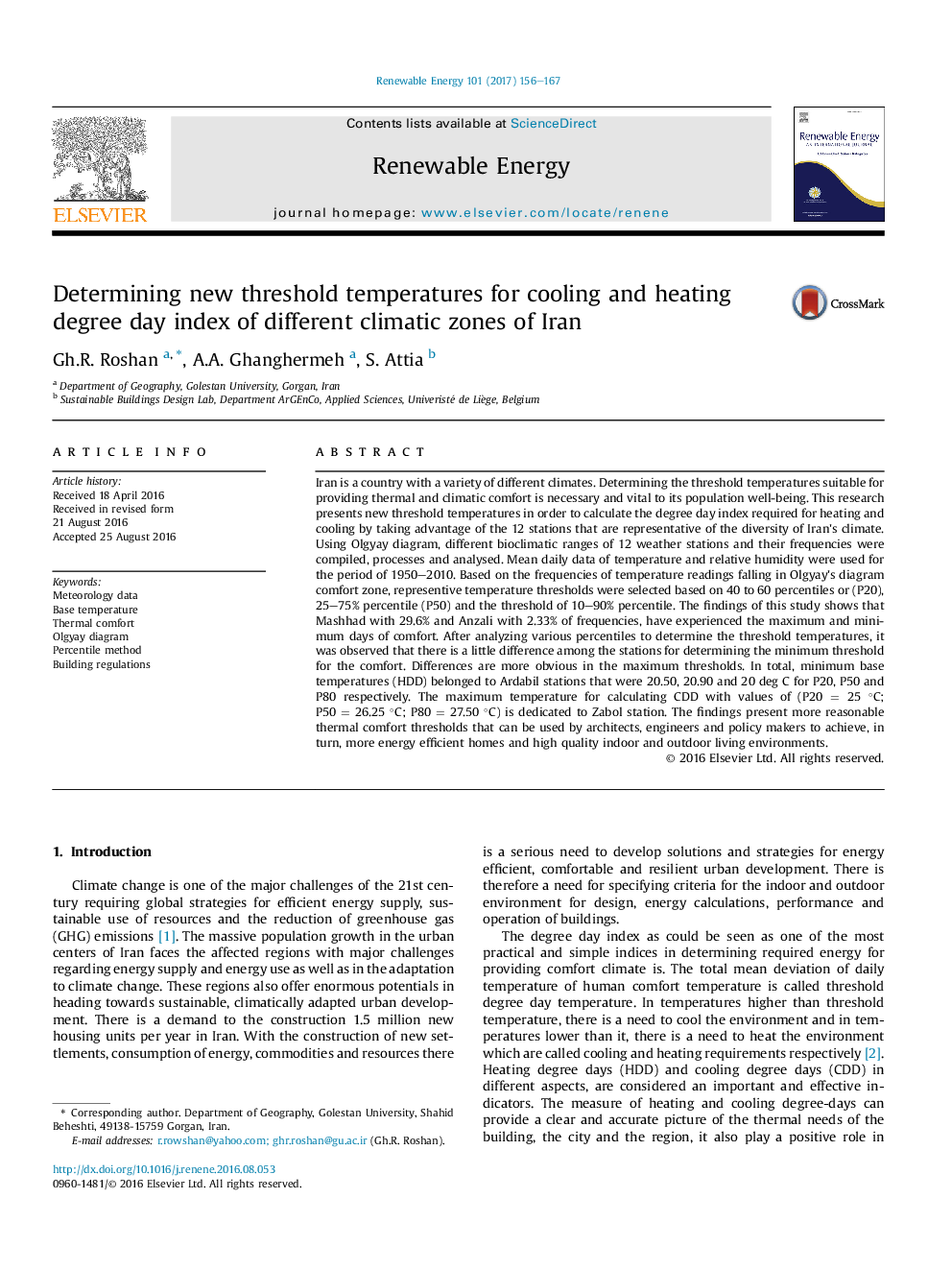| Article ID | Journal | Published Year | Pages | File Type |
|---|---|---|---|---|
| 4926871 | Renewable Energy | 2017 | 12 Pages |
Abstract
Iran is a country with a variety of different climates. Determining the threshold temperatures suitable for providing thermal and climatic comfort is necessary and vital to its population well-being. This research presents new threshold temperatures in order to calculate the degree day index required for heating and cooling by taking advantage of the 12 stations that are representative of the diversity of Iran's climate. Using Olgyay diagram, different bioclimatic ranges of 12 weather stations and their frequencies were compiled, processes and analysed. Mean daily data of temperature and relative humidity were used for the period of 1950-2010. Based on the frequencies of temperature readings falling in Olgyay's diagram comfort zone, representive temperature thresholds were selected based on 40 to 60 percentiles or (P20), 25-75% percentile (P50) and the threshold of 10-90% percentile. The findings of this study shows that Mashhad with 29.6% and Anzali with 2.33% of frequencies, have experienced the maximum and minimum days of comfort. After analyzing various percentiles to determine the threshold temperatures, it was observed that there is a little difference among the stations for determining the minimum threshold for the comfort. Differences are more obvious in the maximum thresholds. In total, minimum base temperatures (HDD) belonged to Ardabil stations that were 20.50, 20.90 and 20 deg C for P20, P50 and P80 respectively. The maximum temperature for calculating CDD with values of (P20 = 25 °C; P50 = 26.25 °C; P80 = 27.50 °C) is dedicated to Zabol station. The findings present more reasonable thermal comfort thresholds that can be used by architects, engineers and policy makers to achieve, in turn, more energy efficient homes and high quality indoor and outdoor living environments.
Related Topics
Physical Sciences and Engineering
Energy
Renewable Energy, Sustainability and the Environment
Authors
Gh.R. Roshan, A.A. Ghanghermeh, S. Attia,
